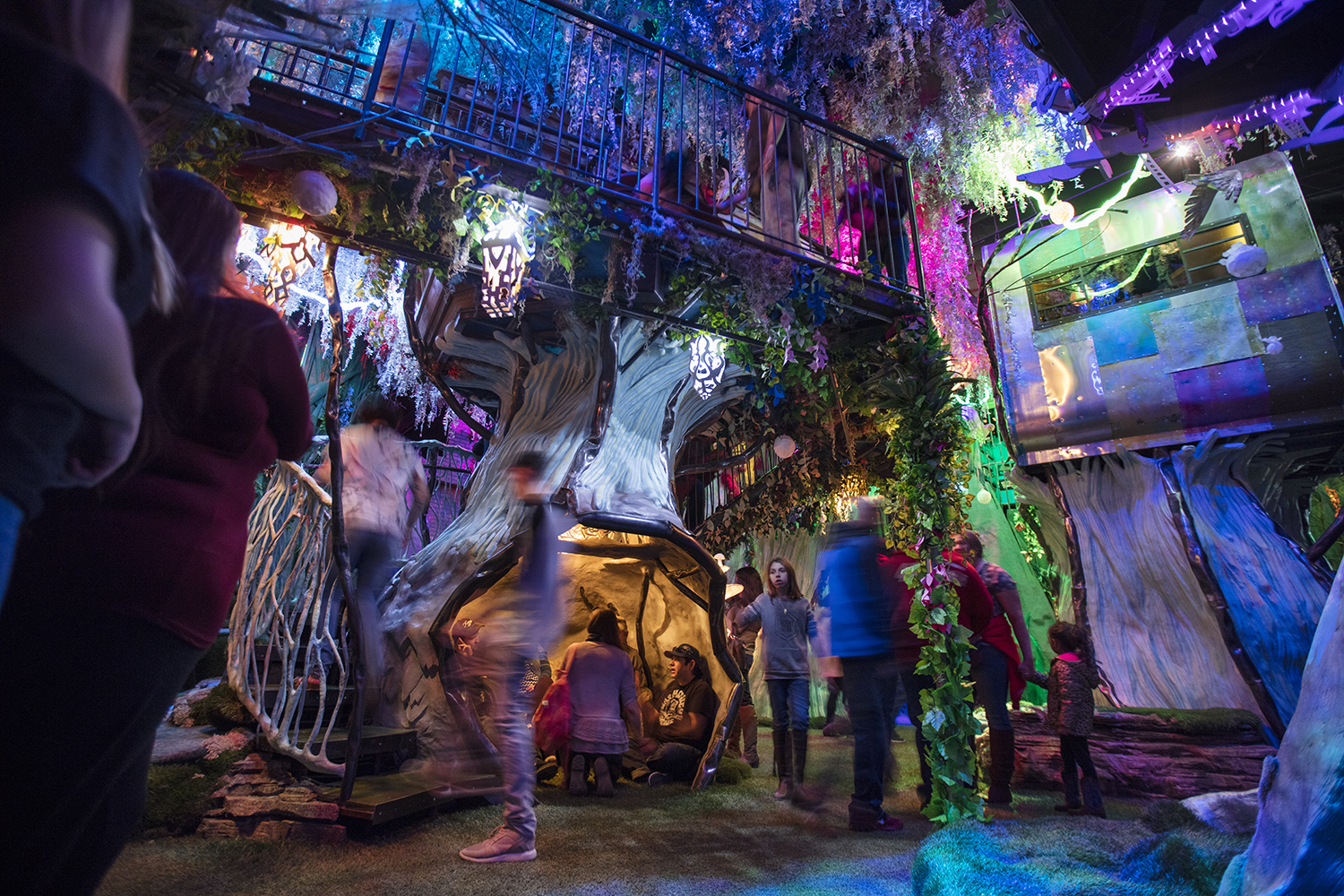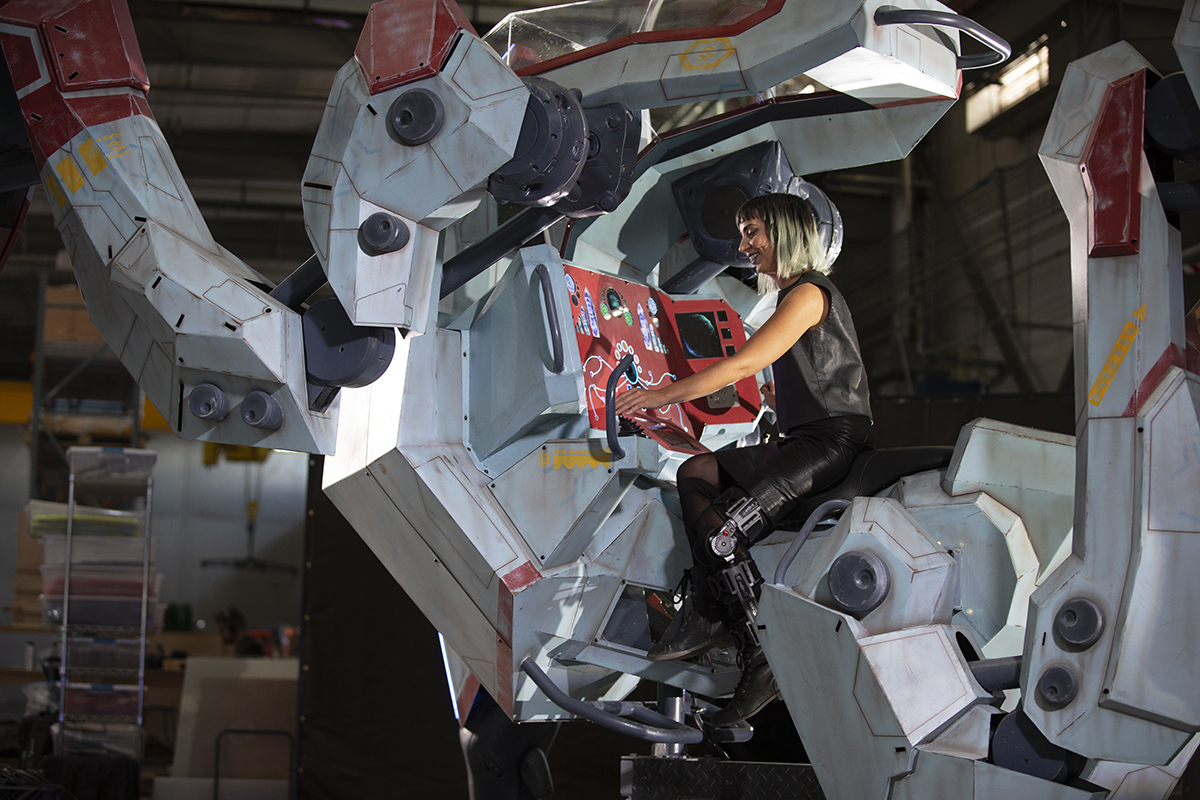
Design: Inclusive Immersive Experiences
How Can We Make Immersive Experiences Inclusive?
Whether or not it’s a good idea to make immersive experiences inclusive seems like a no-brainer. After all, are experiences truly immersive if they aren’t accessible to everyone? Unfortunately, despite best intentions towards inclusivity, many companies lack the knowledge of accessibility design to truly accommodate all of their visitors. For example, some companies will focus their attention on making their exhibits accessible for blind users but neglect strobe issues. Some might focus on mobility devices, but forget to make allowances for other physical disabilities. In my role as a Designer and Developer of Interactive Technology at Meow Wolf, I dedicated myself to exploring new ways of making immersive art accessible to all. Here are a few of the lessons I learned.

In Summer 2018, I broke my leg and was unable to walk without the assistance of a brace for a year. Having already been devoted to furthering our pursuit of accessible design, the experience taught me just how difficult it can be for designers who are able-bodied to consider all aspects of an experience for a disabled user.
Producing Equitable Experiences
When people think of immersive experiences it often brings to mind situations which can be antithetical to an inclusive experience: dark spaces, flashing lights, loud sounds, environments where you are asked to jump, scream, climb, hide, dodge, look for clues, etc. All of these experiences are demanding of an able-bodied person’s abilities. When asked to design for accessibility, then, an experience designer might have some reservations. How do I create a thrilling experience that is also accessible? I have a couple responses to this question. The first is to consider this: what makes your experience thrilling? Is it the dark? Or is it something about the narrative that is enhanced in some way by darkness? If so, is there another way you could bring about that enhancement while still providing some light? The second is to acquiesce to the fact that, no, not every able-bodied experience can be replicated as an accessible experience. But that doesn’t mean that a designer couldn’t create an equitable experience- that is to say, an experience which gives a similar experience that is just as _____ (scary, thrilling, engaging, etc.) as the experience designed for able-bodied participants. For example, say you have a climbing wall in one part of your exhibit. Having only the climbing wall would prevent many visitors from progressing further into the exhibit. Rather than just providing a ramp, how could you turn this into an opportunity for an experience that would be thrilling and challenging for your visitors?
Compliance Vs. Creativity
I would also discourage designers from approaching designing for accessibility from the perspective of merely meeting ADA compliance and instead to consider how designing for accessibility might improve the overall experience for all your visitors? One example might be how you could use floor textures to produce way finding at your museum. Wouldn’t this prove advantageous for all your customers? Look for opportunities like this to improve your overall design.
Responsive Lighting / Sound and Redundancy
It’s important to have redundancy in your interactivity plan in order to invite engagement in many forms. Take for example an experience which uses sound as its primary source of feedback. For hearing impaired users, this experience would not be accessible. At the same time, if the experience’s sounds were paired with flashes of lighting, the visitor could receive feedback regarding their actions and engage. Redundancy such as lighting / sound, text / sound, and so on can really extend your experience once again for all your visitors.
Haptic Feedback
Haptic feedback is vibrational feedback that occurs in response to a stimulus. At Meow, haptics were accomplished predominately by bass shakers and exciters positioned within or around our sculptures. This kind of feedback provides redundancy as mentioned above and is a low-cost, easy to install system that accommodates hearing impaired users.
Places to Rest / Sit
Often overlooked in the immersive experience world is the value of benches, couches, and other resting places. These are helpful for a variety of visitors, not just those who are mobility impaired including those who have chronic illness, are pregnant, who get lightheaded easily, who are autistic, and more. Of course, we want our visitors to be engaged. But above all, we want them to be happy, healthy and comfortable. I’d also suggest considering how you can make benches and resting places integrated with your exhibit. This could be as simple as including text on the bench related to a part of the exhibit or as elaborate as turning it into an explorable sculpture.
Quieter Moments
Piggybacking on the above, it’s important to offer a space for visitors to return to calm. Many disabilities come with the effect of finding calming experiences necessary. Again, while we may as immersive experience designers take “immersive” to mean “overwhelming,” there is no clear reason to do so and it’s unlikely that the majority of your visitors will benefit from constant over stimulation. Quieter spaces could involve less stimulating content or more self-exploratory content, such as reading rooms or listening stations. Spaces which invite visitors to create an experience of their own making such as art stations are also helpful.
Accessibility Consultants
If I have one piece of advice I can offer, it’s to please, please, please hire accessibility consultants if you can. The world of accessibility is vast and if you truly care about accessibility you should hire a professional who is experienced in identifying accessibility issues. I would also advise including a variety of users with disabilities in your testing and listening carefully to their feedback.
